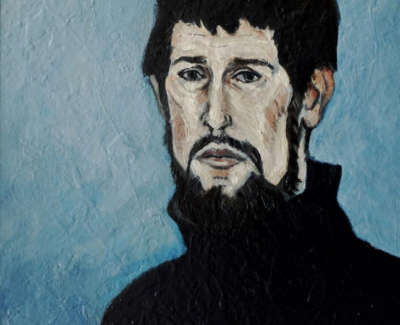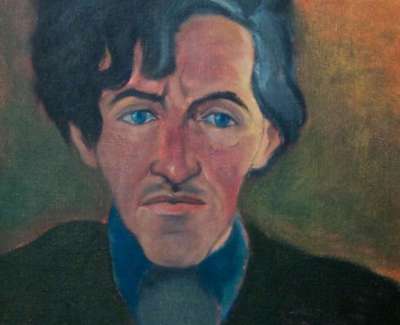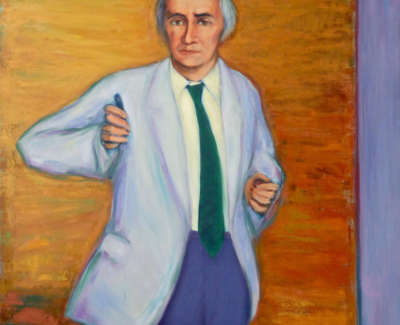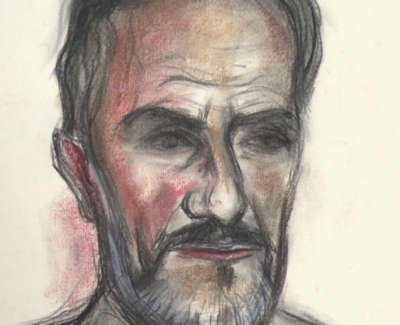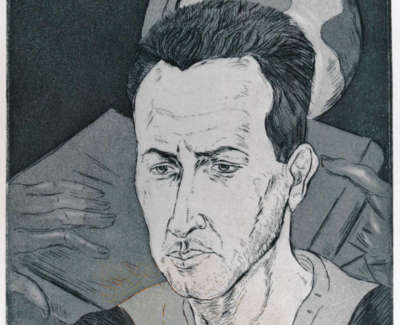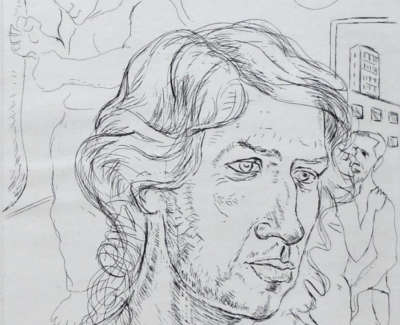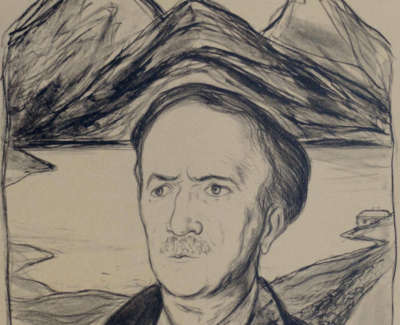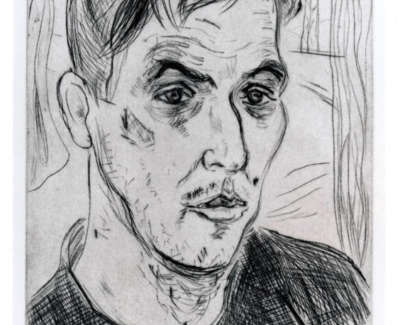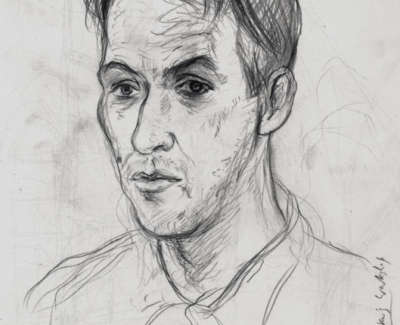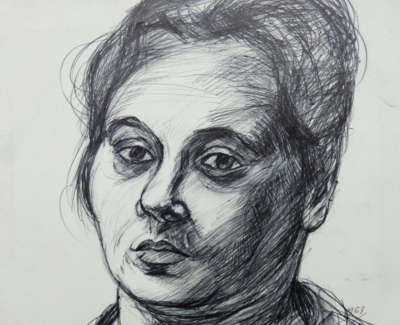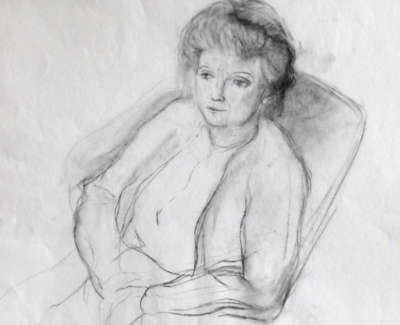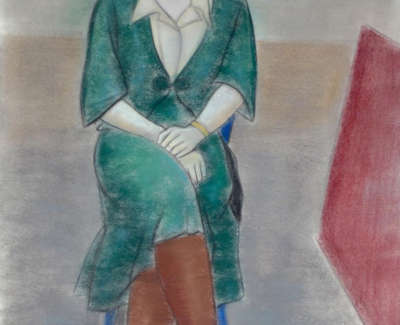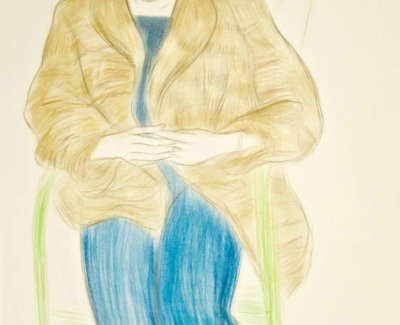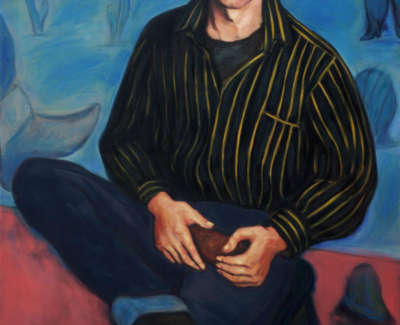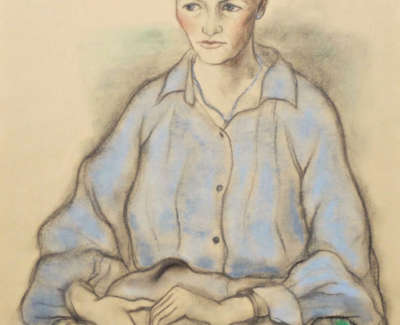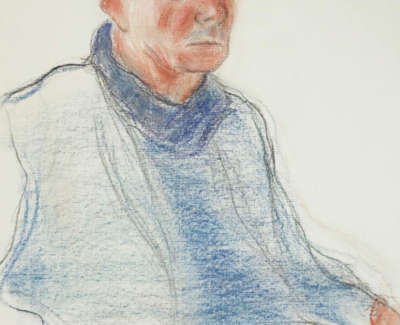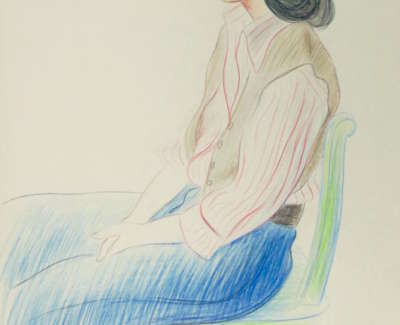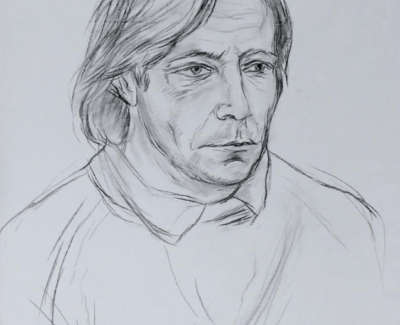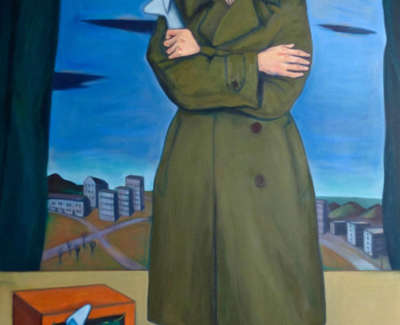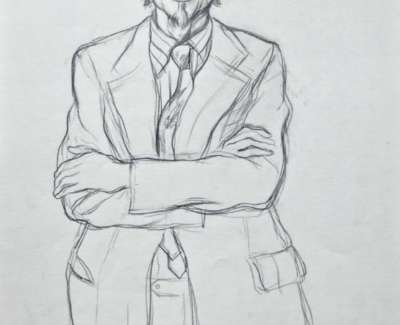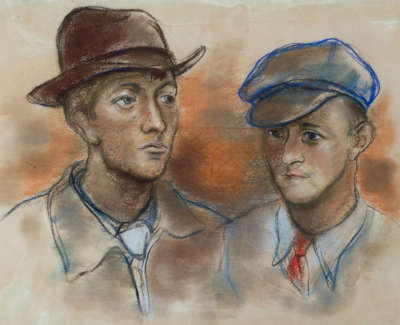Alexander Moffat OBE RSA: A View of the Nation
The Open Eye Gallery presents an exhibition of portraits by Alexander Moffat OBE RSA timed to coincide with the publication of his monograph, Facing the Nation: The Portraiture of Alexander Moffat (Luath Press). With text by Bill Hare, the book charts Moffat’s eminent career as a portraitist of the greats of modern Scottish culture. The exhibition includes portraits of poets involved in Hugh MacDiarmid’s Scottish Renaissance as well as renowned Scottish artists Alasdair Gray, Adrian Wiszniewski, Peter Howson and Ken Currie.
In the first half of the twentieth century, the move from figurative painting towards impressionism and abstraction resulted in the decline of portrait painting in Scotland. Moffat, along with his friend John Bellany, contributed to the resurgence of figuration in Scottish art in the second half of the century. Whilst students at Edinburgh College of Art, Moffat and Bellany were encouraged by the then head of painting, Sir Robin Philipson HRA PRSA RSW, to rebel against the decorative principles of the older generation. Intending to challenge institutional tastes, in 1963 Moffat and Bellany mounted their paintings to the railings of Castle Terrace during the Edinburgh International Exhibition. In the following two years they displayed their work outside the buildings of the Scottish National Gallery and the Royal Scottish Academy, symbolically stating their status as outsiders to the art establishment. The pair endorsed figurative painting that portrayed a modern Scotland set within the industrial age.
Looking abroad for influence, Moffat became interested in the German New Realists and the monumental art championed by French artist, Fernand Léger. His strongly coloured grounds and lyrical use of line show other European influences, particularly that of Matisse and Picasso. Indeed, the self-portrait featured in this exhibition is a homage to Picasso’s 1901 self-portrait. These outward looking, international intentions chimed with the work of poet Hugh MacDiarmid and the Scottish Renaissance movement. MacDiarmid’s call for an epic, national art in Scotland had a profound and lasting impact on Moffat who would later become the documentarian of the poet’s circle which congregated in pubs on Rose Street, Edinburgh. The exhibition includes a lithograph showing poet, Sorley MacLean, with a sublime Highland landscape in the background. The portrait brings the poet into relation with the landscape to associate his voice with Scottish national identity. Moffat has stated, ‘the fact that I am a figurative painter stems from my socio-political views. However, I hope that my representations of the visible are related directly to my experiences as an individual, and not to any political programme.’ Although many of the sitters in Moffat’s portraits are significant cultural figures, they are often also friends and colleagues.
Moffat was born in Dunfermline in 1943. After studying at Edinburgh College of Art (1960-64) he was the Director of New 57 Gallery, Edinburgh, for ten years. Moffat’s first major solo exhibition, A View of the Portrait, was mounted at the Scottish National Portrait Gallery in 1973. In 1979 he took up a teaching position at Glasgow School of Art where he was Head of Painting and Printmaking from 1992 to 2005. At GSA Moffat taught a group of young Scottish artists including Ken Currie, Peter Howson, Steven Campbell and Adrian Wiszniewski, who would become known as the ‘New Glasgow Boys’. Aside from his practice as an artist, Moffat is an influential cultural commentator and has published two books: Arts of Resistance: Poets, Portraits and Landscapes of Modern Scotland (2008) and Arts of Independence (2014). In 2005 Moffat was awarded an OBE. His work is held in significant public collections including the Scottish National Portrait Gallery, the Scottish National Gallery of Modern Art, the Arts Council of Great Britain, the University of St Andrews, the University of Edinburgh and the Yale Centre of British Art.



